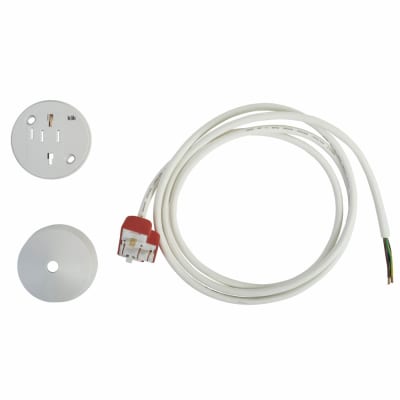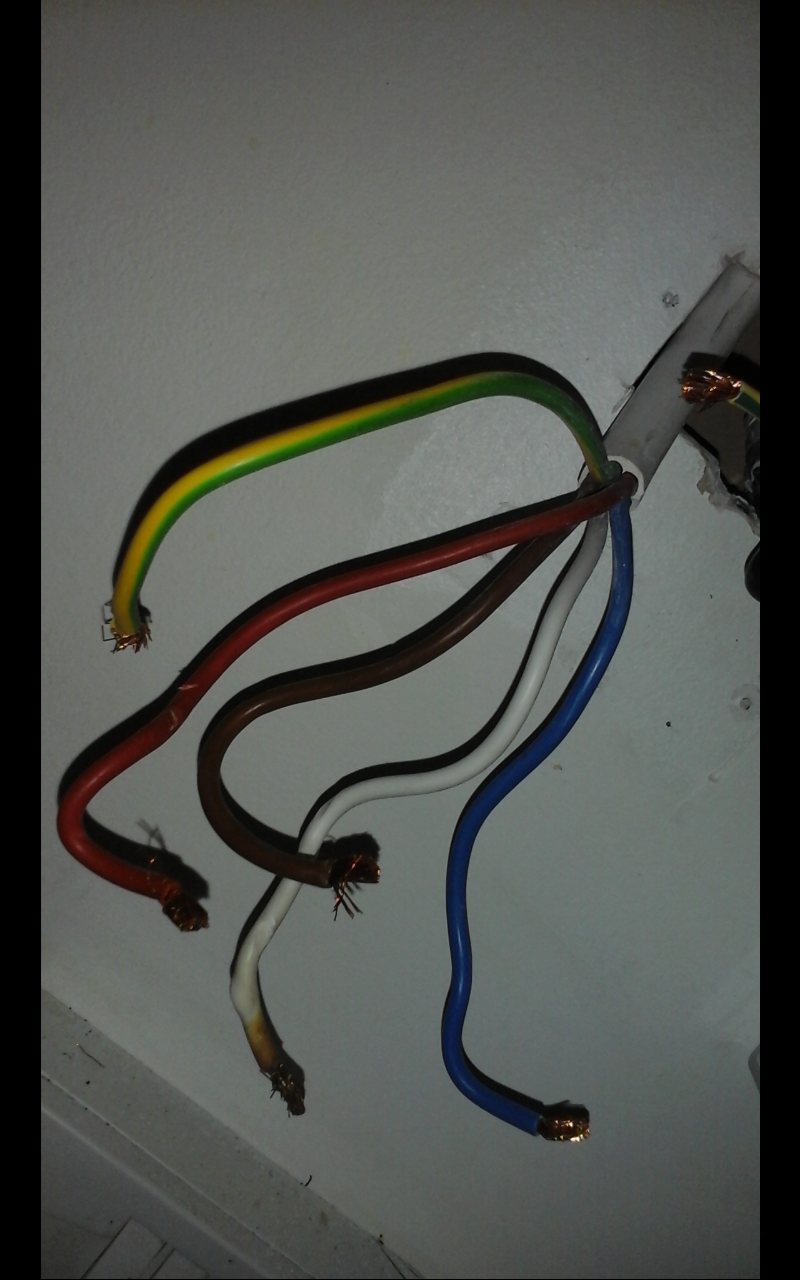and your only wanted 1 foot or 2 from what I recall !
You are using an out of date browser. It may not display this or other websites correctly.
You should upgrade or use an alternative browser.
You should upgrade or use an alternative browser.
Brown, Blue, Black and G/Y flex?
- Thread starter JohnW2
- Start date
Sponsored Links
and your only wanted 1 foot or 2 from what I recall !
That was rather different - nothing to do with core colours but, rather, the fact that I was looking (not very successfully) for 1 or two metres of 6-core flex, but eventually realised/discovered that 7-core (although not 6) is pretty readily available.and your only wanted 1 foot or 2 from what I recall !
Kind Regards, John
Seen it in white a lot, mainly for single phase and a permanent Live, confusion comes as its not always consistent what is used as permanent live, some use black and some brown.
Hagar tend to use Black as Permanent live in there prewired plugs, and that seems to be the most common way.
https://www.electricaldirect.co.uk/...MI2P2uloup5AIVzLHtCh0v2QO-EAQYBCABEgKz2_D_BwE

Hagar tend to use Black as Permanent live in there prewired plugs, and that seems to be the most common way.
https://www.electricaldirect.co.uk/...MI2P2uloup5AIVzLHtCh0v2QO-EAQYBCABEgKz2_D_BwE

Sponsored Links
well, no matter what the colours were, in the absence of any 'regulations', I don't think there would ever be consistency!Seen it in white a lot, mainly for single phase and a permanent Live, confusion comes as its not always consistent what is used as permanent live, some use black and some brown.
Interesting. I have to say that is the opposite of what I would almost certainly do myself - since, in 3-core (single-phase) cables, brown id the ('permanent') L, I would almost certainly stick with that when I used 4-core, using the 'other colour' (black or whatever) as the S/L.Hagar tend to use Black as Permanent live in there prewired plugs, and that seems to be the most common way.
Kind Regards, John
You used to be able to get anything from 4 to 7 core flex with the additional cores all black. They needed numbering or sleeving to ID them.
Easiest way to determine the blacks was by referencing the colours to each side of it.
IIRC grey cores were introduced when the UK moved to harmonised colors for fixed-wiring cables in the early 2000s because the UK objected to having multiple black cores in standard 3-phase cables.I think all harmonised-colours 4-core flexes I've seen (and used), plus things like SWA, have had brown, black, grey and G/Y cores. My point was that I don't recall ever having seen brown, blue, black and G/Y before - have you?
All the 4-core flex I saw in the 90s (admittedly not much) was brown/blue/black/g+y like the stuff posted here.
Last edited:
Interesting. I have to say that is the opposite of what I would almost certainly do myself - since, in 3-core (single-phase) cables, brown id the ('permanent') L, I would almost certainly stick with that when I used 4-core, using the 'other colour' (black or whatever) as the S/L.
Kind Regards, John
I would quess there use of Brown is because the normal 3 core version, which is mainly designed for connecting normal lights to a single or multi output Klik box, fed from a switched supply as well as a permanent supply (usually via a key switch), uses Brown as what would then be a switched live.
To this day i always open the plug to check as there is no way of knowing for sure, as often the flex is installed by the user rather than buying the preassembled units. we proberly find about 3 lights a year, that go on to emergency when the lights turn off. due to the Brown and Black reversed.
It also seems to be the habit lately of finding Pirs connected using these 4 pin plugs and basically feeding back into the lighting system via the plug. again using the black core.
It dont seem right but i suppose unlike a "Widow maker" the plugs dead as all live pins break simultaneously on removal.
Though when I connect standard Pirs to normal circuits, without these klik plugs, I do what you say and use the Brown as permanent live, though cannot explain why.
Maybe the association of Brown in an appliance flex being Permanent live.
- Joined
- 16 Sep 2007
- Messages
- 1,902
- Reaction score
- 161
- Country

No, of course not - I use 4-core flex 'all the time'
I think all harmonised-colours 4-core flexes I've seen (and used), plus things like SWA, have had brown, black, grey and G/Y cores. My point was that I don't recall ever having seen brown, blue, black and G/Y before - have you?
Kind Regards, John
4 core flex is almost always green/yellow, blue, brown and black.
Our experiences clearly differ. I've used a fair bit of 4-core fles, and have a fair bit 'on my shelves' but, as must be apparent from the fact that I started this thread, I've never seen those colours used before.4 core flex is almost always green/yellow, blue, brown and black.
I'm certainly not at all sure about 'nearly always'. Having just had a very quick look, the five suppliers I most commonly use (TLC, QVS, RS, Denmans and Screwfix) are all selling 4-core flex with brown/black/grey+G/Y (which is what I've always seen) - I wonder where you get your "green/yellow, blue, brown and black"? ...
TLC ....
QVS ...
RS ...
Denmans ...
Screwfix ...
Kind Regards, John
Are sure about that?aptsys is talking about the "old colours" ... and you are looking at "new colours" available now.
For a start, what part of "... IS almost always..." refers to decades ago? ... and, even if it did, would "blue, brown and black" really have been acceptable under the 'old colours' (when black was neutral and brown had {as far as I am aware} no defined meaning for LV AC wiring)?
Kind Regards, John
Last edited:
The colour code for flex was harmonised decades before non-flexible cables.Are sure about that?
For a start, what part of "... IS almost always..." refers to decades ago? ... and, even if it did, would "blue, brown and black" really have been acceptable under the 'old colours' (when black was neutral and brown had {as far as I am aware} no defined meaning for LV AC wiring)?
Kind Regards, John
So flex was harmonised is 70’s ?
So it had brown blue then.
Then in 2008 ish grey was introduced.
So it had brown blue then.
Then in 2008 ish grey was introduced.
See this today, how would you connect this for 3 phase and N
Red, Brown, White, Blue and Earth
Red, Brown, White, Blue and Earth
DIYnot Local
Staff member
If you need to find a tradesperson to get your job done, please try our local search below, or if you are doing it yourself you can find suppliers local to you.
Select the supplier or trade you require, enter your location to begin your search.
Please select a service and enter a location to continue...
Are you a trade or supplier? You can create your listing free at DIYnot Local
Sponsored Links
Similar threads
- Replies
- 20
- Views
- 12K

